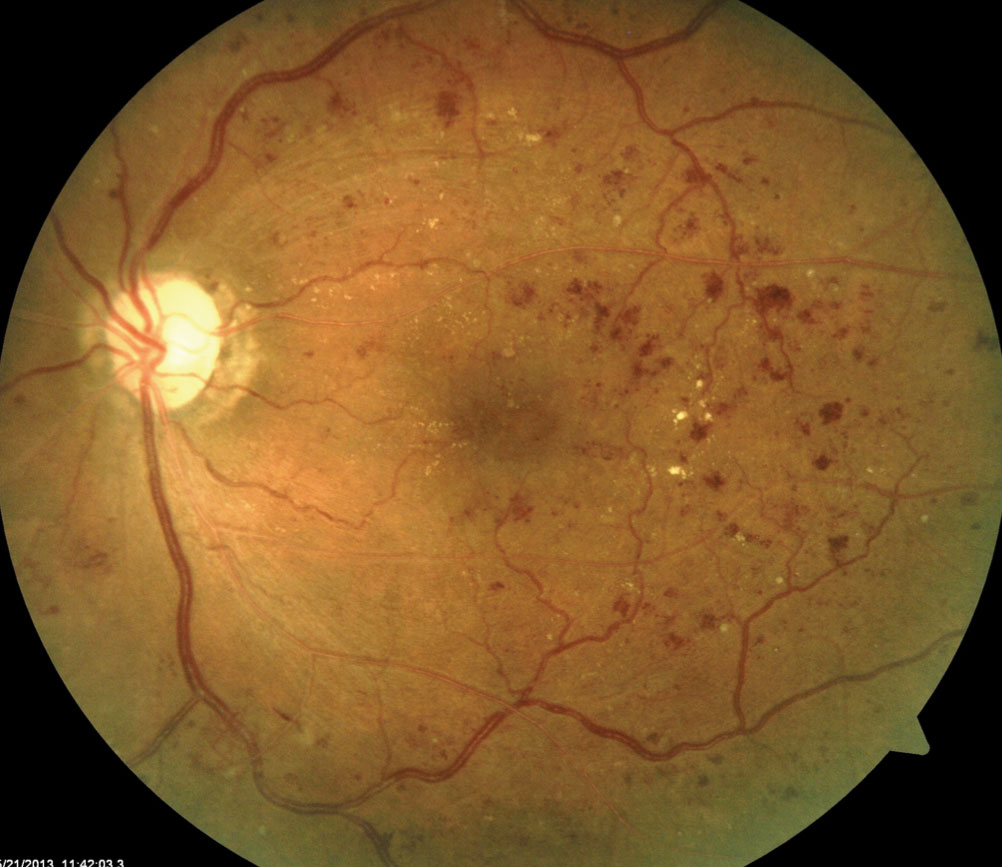 |
| Numbers of those affected by the diabetes epidemic have grown substantially since numbers were last reported in the early 2000s. Click image to enlarge. |
The leading cause of blindness among working-aged adults in the United States, is diabetic retinopathy (DR). Since the last known estimates of diabetes-related eye disease were published in 2004, researchers recently updated estimates of DR and vision-threatening DR prevalence by demographic factors and US county and state. The team included relevant data from the CDC’s Vision and Eye Health Surveillance System, reporting that the prevalence of diabetes-related eye disease remains high.
The study team defined individuals with diabetes as those who had a hemoglobin A1c level of at least 6.5%, took insulin or reported ever having been told by a physician or healthcare professional that they have diabetes. DR was defined as any retinopathy in the presence of diabetes, including nonproliferative retinopathy (mild, moderate or severe), proliferative retinopathy or macular edema. Vision-threatening DR was defined as having—in the presence of diabetes—severe nonproliferative retinopathy, proliferative retinopathy, panretinal photocoagulation scars or macular edema.
The study authors estimated that 9.6 million people in the United States (26.43% of those with diabetes) had DR and 1.84 million (5.06% of those with diabetes) had vision-threatening DR in 2021. There was marked variation in prevalence across states, and the number of people living with diabetes-related eye disease grew substantially since prevalence was last estimated in 2004, with that study finding 4.1 million people had DR and close to 900,000 had vision-threatening DR.1
“Additionally, glycemic control has worsened in recent years with the prevalence of hemoglobin A1c less than 7% among US adults 20 years or older with diabetes decreasing from 57.4% in 2007 to 2010 to 50.5% in 2015 to 2018,” the authors explained in their paper for JAMA Ophthalmology. “These trends would be expected to result in a larger number of people living with DR and vision-threatening DR in the United States.”
Black and Hispanic individuals have a higher standardized prevalence of vision-threatening DR (8.66% and 7.14%, respectively) than white individuals (3.55%).1 “Reasons for this disparity could include poorer glycemic control among Black and Hispanic individuals with diabetes compared with white individuals, the earlier age at diabetes diagnosis and longer disease duration among Black and Hispanic patients or disparities in the quality of diabetes care experienced by Black and Hispanic patients,” the authors explained.
Prevalence of DR and vision-threatening DR among people with diabetes increased substantially with age but decreased in older age groups, likely because DR and vision-threatening DR are markers for more severe diabetes, which can lead to early mortality, the authors noted.
They also estimated that the crude prevalence of DR and vision-threatening DR among people with diabetes younger than 25 was 13.01% and 1.41%, respectively, but noted that additional research in this age group is needed.1
“These estimates can inform the allocation of public health resources and interventions to communities and populations at highest risk, such as expanding teleretinal imaging to improve
DR screening in counties with the highest prevalence,” the authors concluded.
In response to this study, a commentary also published in JAMA Ophthalmology pointed out that these estimates have multiple levels of public health relevance.
“First, the national estimates clearly indicate the need for attention by the United States and state governments regarding development of national DR screening programs,” the commentary author explained. “Recent advances in artificial intelligence, retinal image processing and telemedicine technologies provide a toolbox for designing DR screening programs.” Policymakers will need cost-effectiveness analyses of DR screening programs to build upon the current estimates of DR prevalence in the present study.
“Second, estimated prevalence of DR in people with diabetes aged 25 years or younger is 13% and more than 10% in pediatric age groups. These numbers call for greater public health awareness of ocular comorbidities in children with diabetes,” the commentary notes, include more prevention strategies tailored to children with diabetes.
Standardized prevalence rates by demographic subgroups can inform national- and state-level resource allocation and prioritization to improve infrastructure and quality of local ophthalmic care.2 “The raw unstandardized DR and vision-threatening DR rates could have been, but are not, reported in the article,” the commentary author noted. Such measures “can be equally informative, as these rates provide a picture of the current state of DR and vision-threatening DR burden in people with diabetes in each county. Such information can inform state health departments on where to prioritize prevention efforts in diabetes control in the state.”
While the commentary authors agree that the study provided the most recent estimates of DR and vision-threatening DR burden in the United States, they also noted that the past 20 years experienced major policy changes, which may have impacted the diabetes epidemic. The Affordable Care Act Medicaid Expansion policy, for example, was associated with an increase in dilated eye examinations in the first two years of policy implementation.2 The recent COVID-19 pandemic reportedly exacerbated the diabetes pandemic.2
“These are examples of factors that suggest that DR and vision-threatening DR prevalence in people with diabetes in 2021 may be underestimated if assuming a stable DR/vision-threatening DR burden using data sources from 2000 to 2019.”
1. Lundeen EA, Conte-Burke Z, Rein DB, et al. Prevalence of diabetic retinopathy in the US in 2021. JAMA Ophthalmol. June 15, 2023. [Epub ahead of print]. 2. Kong X. Diabetic retinopathy in the US–where we are now and what is next. JAMA Ophthalmol. June 15, 2023. [Epub ahead of print]. |

